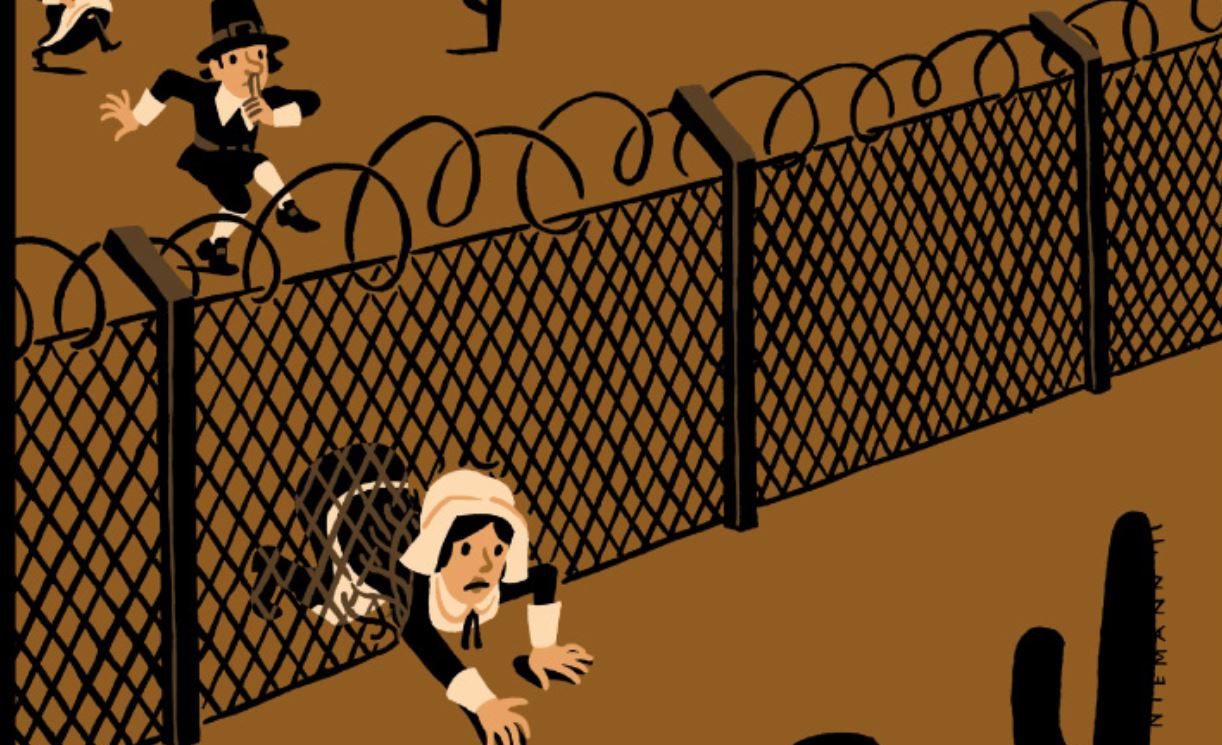Every people has creation myths, whether it’s the Bible’s Adam and Eve or the Daoists’ primordial chaos separating into yin and yang. For America, Thanksgiving is part of the creation myth.
Thanksgiving’s creation myth goes something like this: in 1621, at the Plymouth Plantation, the Pilgrims held a feast after a successful growing season. Squanto, a Native American who served as an interpreter for the English-speaking colony had taught the Pilgrims how to catch eel and grow corn. The Pilgrims set aside a day to celebrate immediately after their first harvest. The Thanksgiving feast lasted three days and was attended by Pilgrims and Native Americans from the Wampanoag Confederacy. It consisted of fowl, venison, fish, lobster, claims, berries, fruit, pumpkin, squash and turkey.
This creation myth is important for America because it teaches us a lesson: as a nation of immigrants, we may not share the same history and culture, but what binds us together is a set of principles. Of course those principles include things like inalienable rights and popular sovereignty. But Thanksgiving teaches an underlying, universal principle: since all of us trace our origin to another land, the way forward in America is to be kind to others, including strangers, and show your gratitude for their kindness.
Sara Josepha Hale, who campaigned for designating Thanksgiving as a national holiday, wrote in 1871 that: “The Influx of foreigners into our country is prodigious. Not only by the natural increase of population but by immigration. To bind together the discordant nationalities into one American brother, what strand so potent as Thanksgiving? Let everyone who claims the name American, wherever he may be – in the old world or the new, on the land or the sea – unite to commemorate the day. It will be stronger than the laws or armies to make our nation one.”
Of course, we too often fall short of our Thanksgiving aspirations. Exhibit #1 is how those immigrants who followed the Pilgrims inundated and overpowered the Native Americans who had been living on this bountiful land for many generations. Exhibit #2 is how between about 1619 and 1810 those immigrants trafficked some 300 to 400 thousand African slaves to America. I could go on.
Today, America is debating what to do with the 12 million or so undocumented immigrants within our borders. However this difficult rule-of-law issue is resolved, let’s do it with Thanksgiving’s lessons of kindness and gratitude in mind. They’re not so different than the Pilgrims. Almost all came wanting a better life for themselves and their families. And they are willing to work hard to get that better life.
Finally, on behalf of our law firm, I’d like express our gratitude to our wonderful clients. We’re thankful that we are able to play a small part in bringing families together. We’re thankful that we get to play a small part in bringing entrepreneurs and talented professionals and artists to America. We’re proud of your contributions. And we’re proud to use our legal skills to fight for our clients because upholding the rule of law is one of those principles that binds America together.


Leave a Reply